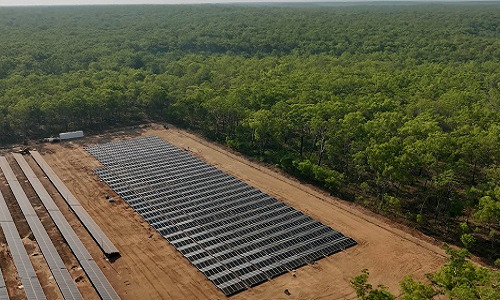
Australian solar deployment technology company 5B has completed construction of an installation at the rural community of Wurrumiyanga in the Northern Territory, Australia.
Representing a AU$6.1 million (US$4 million) investment from the Northern Territory government as part of its Remote Power System Strategy, the 1.2MW solar installation will also be paired with a 3MWh battery storage system. Once complete, almost 50% of the power supplied to Wurrumiyanga will be renewable.
Try Premium for just $1
- Full premium access for the first month at only $1
- Converts to an annual rate after 30 days unless cancelled
- Cancel anytime during the trial period
Premium Benefits
- Expert industry analysis and interviews
- Digital access to PV Tech Power journal
- Exclusive event discounts
Or get the full Premium subscription right away
Or continue reading this article for free
The project is expected to be operational in 2024, and will replace some of the aging diesel infrastructure that currently powers the community.
The Northern Territory government said that the Wurrumiyanga site “provides an opportunity to apply lessons from this project for the transition of other remote communities to renewables.”
5B deployed its Maverick technology at the site, a foldable module racking device that deploys solar modules low to the ground in a long concertina at a shallow, slightly tented angle.
In conversation with PV Tech Premium early this year, 5B said that the Maverick allows for faster project deployments over significantly less land than traditional fixed-tilt or tracker-mounted technologies. The technology arrives to a site pre-fabricated and ready to ‘plug and play’, and its central metric is one of energy production per hectare, rather than per module.
In the case of Wurrumiyanga, 5B said that it took four deployment staff four days to complete the installation.
Of particular note in this project is its location. On the edge of Bathurst Island, one of the two inhabited Tiwi Islands to the North of mainland Australia, Wurrumiyanga is a protected Indigenous area with a population of around 2,000.
Deploying solar projects on indigenous land in Australia imposes specific design and construction conditions, as well as ownership, community and social license concerns. According to the First Nations Clean Energy Network, speaking to this publication last month, “it is self-evident that proper and meaningful engagement with First Nations will be essential for the success of the renewable energy sector and for any policy initiative.”






